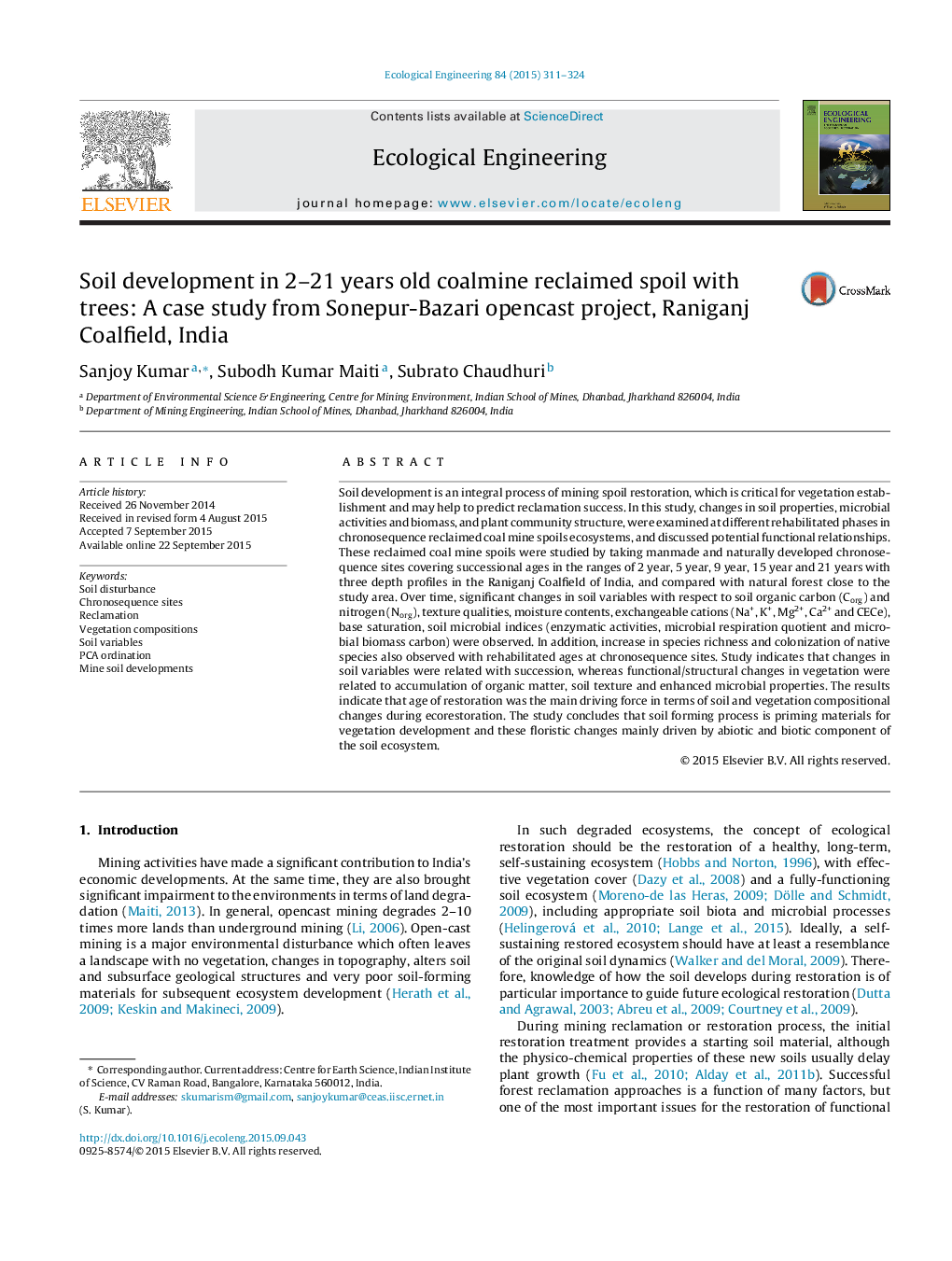| کد مقاله | کد نشریه | سال انتشار | مقاله انگلیسی | نسخه تمام متن |
|---|---|---|---|---|
| 4388798 | 1618015 | 2015 | 14 صفحه PDF | دانلود رایگان |
Soil development is an integral process of mining spoil restoration, which is critical for vegetation establishment and may help to predict reclamation success. In this study, changes in soil properties, microbial activities and biomass, and plant community structure, were examined at different rehabilitated phases in chronosequence reclaimed coal mine spoils ecosystems, and discussed potential functional relationships. These reclaimed coal mine spoils were studied by taking manmade and naturally developed chronosequence sites covering successional ages in the ranges of 2 year, 5 year, 9 year, 15 year and 21 years with three depth profiles in the Raniganj Coalfield of India, and compared with natural forest close to the study area. Over time, significant changes in soil variables with respect to soil organic carbon (Corg) and nitrogen (Norg), texture qualities, moisture contents, exchangeable cations (Na+, K+, Mg2+, Ca2+ and CECe), base saturation, soil microbial indices (enzymatic activities, microbial respiration quotient and microbial biomass carbon) were observed. In addition, increase in species richness and colonization of native species also observed with rehabilitated ages at chronosequence sites. Study indicates that changes in soil variables were related with succession, whereas functional/structural changes in vegetation were related to accumulation of organic matter, soil texture and enhanced microbial properties. The results indicate that age of restoration was the main driving force in terms of soil and vegetation compositional changes during ecorestoration. The study concludes that soil forming process is priming materials for vegetation development and these floristic changes mainly driven by abiotic and biotic component of the soil ecosystem.
Hypothetical relationships between level of mining degradation and successional changes in vegetation with time duration.Figure optionsDownload as PowerPoint slide
Journal: Ecological Engineering - Volume 84, November 2015, Pages 311–324
